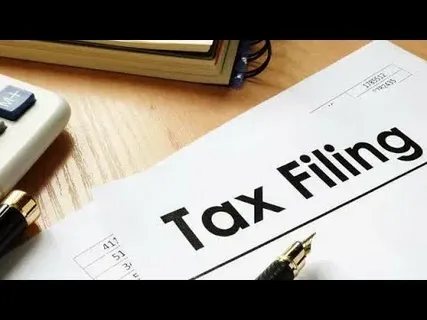If you’re living outside the UK but still earning income from it — like renting out a flat, running a business, or selling property — then chances are you’ll need to deal with the UK Self Assessment system.
Unfortunately, it’s not always straightforward. From getting your residency status right to figuring out the right forms and deadlines, there are a few common mistakes that catch people out year after year. This guide is here to help you steer clear of them and make sure everything runs smoothly when it’s time to file Non-Resident Self Assessment Tax Return documents.
Do You Need to File?
Let’s start with the basics. Just because you don’t live in the UK doesn’t mean you can ignore the taxman. HMRC still expects a Self Assessment return from non-residents who earn income from UK sources. This could include:
- Rental income from UK property
- Capital gains from selling UK assets (especially residential property)
- Earnings from a UK-based business or partnership
- Bank interest or dividends (in certain cases)
And if HMRC has sent you a notice to file, you must do so — even if you think you don’t owe any tax.
Getting Your Residency Status Right
Before filling in anything, you’ll need to check whether you’re actually considered a non-resident for UK tax purposes. The UK uses something called the Statutory Residence Test (SRT) to decide. It takes into account:
- How many days you spent in the UK
- Whether you have a home in the UK
- Work ties and family connections
If you qualify as non-resident, that’s great — but don’t stop there. You’ll also need to fill in an extra form called SA109 alongside your main return to declare your non-residency. Without it, HMRC may treat you as a UK resident by default, which could result in a higher tax bill.
Key Deadlines to Remember
Staying on top of deadlines can save you from late filing penalties:
- 5 October – Register for Self Assessment if you haven’t done it before
- 31 October – Deadline for paper returns
- 31 January – Deadline for online returns and any tax due
- 31 January and 31 July – Payment deadlines (including ‘payments on account’)
If you miss these dates, penalties start at £100 and can rise quickly the longer you leave it.
Mistakes That Catch People Out
Let’s look at the most common slip-ups non-residents make when filing their returns — and how to avoid them.
- Forgetting the SA109 – It’s easy to miss, but it’s essential if you want HMRC to recognise you as non-resident.
- Misunderstanding Double Taxation Treaties – If your home country has a treaty with the UK, you might be able to claim relief from double taxation — but only if you apply the rules correctly. Get it wrong, and you could end up paying more than necessary (or not enough, which HMRC won’t like).
- Using the Wrong Software – As mentioned earlier, not all tax return software handles the SA109 form. Double-check before you commit.
- Underreporting UK Income – All UK-sourced income must be reported, even if it seems minor. That includes rental income, business profits, or gains from selling UK property.
- Missing Out on Allowable Expenses – If you’re letting property, you can usually deduct costs like mortgage interest, letting agent fees, repairs, insurance, and more. Don’t leave money on the table.
What Happens After You File?
Once you file Non-Resident Self Assessment Tax Return documents (with the SA109, if needed), HMRC will review your return and send you a tax calculation. If you’ve overpaid, you’ll get a refund. If you owe tax, make sure it’s paid by the deadline to avoid interest and penalties.
If your situation changes — for example, you spend more time in the UK or start new income streams — it’s worth reviewing your tax position each year.








